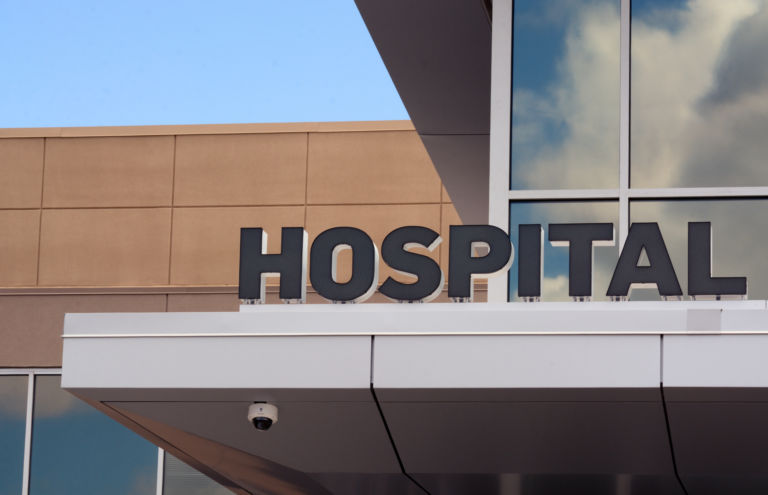The COVID-19 impact on consumer demand happened rather abruptly in March. Demand for many goods and services plummeted due to voluntary social distancing and mandatory stay-at-home orders.
COVID-19 stressed the health care sector disproportionately and hospitals especially. Hospitals treat most patients that contracted the disease, and thus there are fewer opportunities to access hospitals due to policies and protocols established to treat patients that have coronavirus. This produced shocking decreases in supply and demand for hospital-based health care.
FAIR Health Studies
To help illustrate COVID-19’s impact on health care utilization and revenue among hospitals, I will draw on the findings from two studies (see here and here) conducted by FAIR Health, a non-profit organization focused on health care transparency. FAIR Health possesses a tranche of over 31 billion private insurance claims, the most extensive collection of such claims. The two studies draw on this claims database to examine changes in utilization and revenue among hospital systems and non-hospital providers during the beginning of the COVID-19 pandemic.
The FAIR Health study regarding hospitals drew on claims data from January to March of 2020 and compared that to the same period in 2019. The report further distinguishes between small hospitals (100 beds or fewer), medium hospitals (101 to 250 beds), and large hospitals (over 250 beds). Here are some of the findings from the report:
- First-quarter revenue, 2020 vs. 2019 – small hospitals didn’t see any change in revenue; medium-sized hospitals saw a minor decrease in revenue (down to 1.2 million in 2020 from 1.3 million in 2019); large hospitals saw the largest decrease in revenue (down to $4.2 million in 2020 from $4.5 million in 2019)
- Revenue among hospitals in March 2020 vs. March 2019 – the study found that nationally, in March, small hospitals saw a 4% increase in revenue, medium hospitals saw a 4% decline, and large hospitals saw a 5% decline.
- Discharge volume in March 2020 vs. March 2019 – discharges are defined as the release from a hospital after treatment. The study found that, nationally, in March, small hospitals saw a decrease in discharges by 26%, medium hospital discharges decreased by 29%, and large hospital discharges decreased by 32%.
- Revenue among hospitals in March 2020 by week vs. March 2019 – Nationally, small hospitals saw increases in revenue in each week of March. However, medium and large-sized hospitals saw decreases each week of March. Medium and large-sized hospitals saw the largest decreases in revenue in week 3 of March amounting to 17% and 16%, respectively, compared to 2019.
The months ahead will likely look different, and a similar examination of that claims data will be necessary for a complete picture. Yet the data we do have now shows a dramatic drop in hospital utilization compared to last year.
Supply Shock or Demand Shock?
Consumer behavior was turned upside down as coronavirus spread throughout the country. But, was it more of a supply shock or demand shock? The answers to these questions will help health policy researchers better understand the lasting impact this time will have on the health care sector.
Supply and demand “shocks” can help explain consumer behavior during a recession. In a recent article for Intelligencer, Josh Barro wrote about whether supply or demand shocks were more to blame for the unusual economic activity we see now. A supply shock is an unexpected event that changes the supply of a product, resulting in an unforeseen change in price. A demand shock is a sudden event that dramatically changes the demand for goods and services. Barro uses the oil crisis of the 1970s as an example of a supply shock and the 2008 financial crisis as an example of a demand shock.
Supply and demand shocks can be positive or negative. In the current case, the health care sector has experienced negative supply and demand shocks. The supply shock comes primarily from a combination of stay-at-home orders that force doctors’ offices to close and a decrease in the quality of health care. In this context, decreased quality means that consumers may want to go to the hospital or doctor’s office but choose not to because of the heightened risk of contracting the disease. But on the other hand, there has also been a demand shock. Millions are out of work, and the unemployed may be hoarding savings or choosing to forgo typical health care that they would consume under normal circumstances.
There are several ways to look at the current phenomenon and say it is primarily a demand shock or a supply shock. While there is a compelling case for both arguments, I believe a combination of the two is to blame.
Implications for the Future
To the extent that the supply and demand for that health care ever return to normal, there are likely lasting changes in the entire health care landscape due to COVID-19. As one can see from the FAIR Health studies, the consequence of the virus was profound in March. While these data only provide a snapshot of the actual impact, conclusions can be drawn regarding the future impact on health care.
One of the lasting effects will be further consolidation among large hospitals systems. Health care has a merger and acquisition problem, which I have discussed previously (see here and here). As hospital revenue drops, smaller and less profitable hospitals may be acquired by larger, more profitable hospitals. The struggling hospitals see a takeover by a larger hospital chain with more resources as a way to achieve financial stability. This is almost certain to accelerate as providers face massive revenue hits. Unfortunately, as hospitals consolidate, the market power of each hospital system grows, and so do the prices of health care at that hospital system.
Look for Part 2 of this series for utilization and revenue among non-hospital providers.


